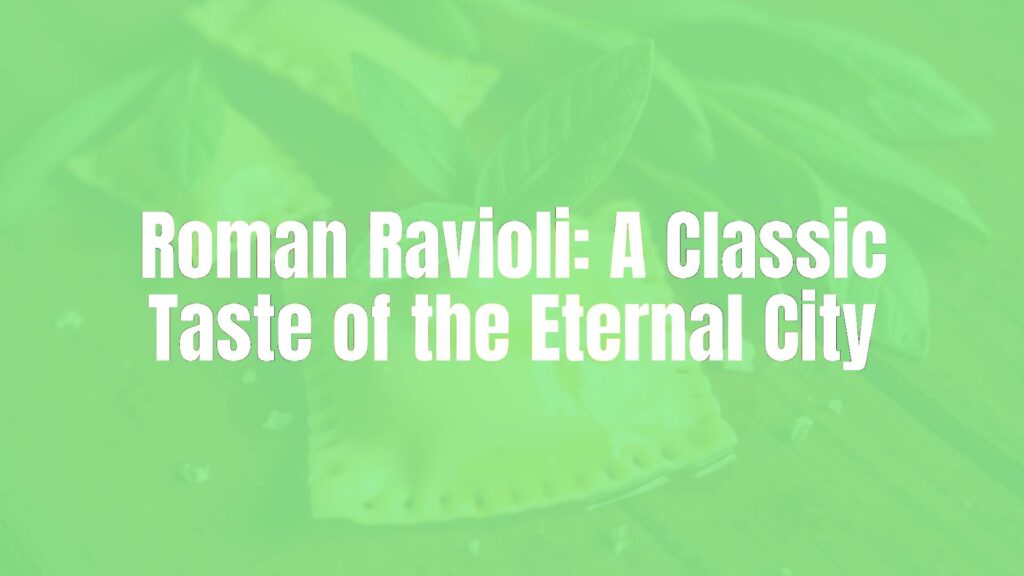Discovering Roman Ravioli
Roman ravioli, or “ravioli alla romana,” are a beloved interpretation of stuffed pasta originating in Rome. Unlike their counterparts from other Italian regions, Roman ravioli are distinguished by their simple yet flavorful fillings and affinity for local ingredients. They reflect the culinary preferences of the Eternal City — rustic, unfussy, and deeply satisfying.
Characteristics and Preparation
Roman ravioli are typically rectangular or square pasta parcels, filled with a blend of soft, creamy ricotta cheese, seasoned with hand-grated Pecorino Romano and sometimes finished with a touch of nutmeg or lemon zest for brightness. The pasta dough, made from durum wheat semolina and eggs, is rolled thin to achieve a delicate yet firm bite.
Once shaped and filled, Roman ravioli are usually boiled until just tender. They are most commonly dressed with a light sauce — from the simplicity of melted butter and sage to a tangy tomato-based sugo — designed to enhance, rather than overpower, the ravioli’s fresh flavors.
Historical and Regional Roots
Stuffed pasta has been present in central Italian cooking since the Middle Ages, but it’s in Rome that ravioli took on a distinctive identity. Historically, these ravioli offered a clever way to use up leftover or surplus ingredients, particularly in times of religious observance when meat was avoided. Today, they remain a fixture at Roman feasts and Sunday family meals, celebrating the region’s appreciation for sheep’s milk cheeses and fresh pasta traditions.
Key Ingredients
- Pasta dough: Made from high-quality durum wheat semolina, eggs, and sometimes a touch of olive oil.
- Ricotta: Fresh, creamy sheep’s milk ricotta is traditional in Rome.
- Pecorino Romano: A sharp, salty sheep’s cheese integral to Roman cooking.
- Nutmeg or lemon zest: For aromatic depth.
- Light sauces: Such as butter and sage or pomodoro (tomato sauce).
Popular Variations and Ingredient Substitutions
While the classic Roman version highlights ricotta and pecorino, variations exist across households and trattorias. Some incorporate spinach or wild herbs into the filling, echoing the influence of neighboring regions. Others might feature a meat-based stuffing, though this is less typical for a true “alla romana” style.
For those seeking substitutions, cow’s milk ricotta can replace sheep’s ricotta in places where the latter is hard to find, and Parmigiano Reggiano can stand in for Pecorino if necessary, though the distinctive tang will differ. For a dairy-free option, tofu blended with nutritional yeast offers an alternative base for the filling.
How to Enjoy Roman Ravioli
Roman ravioli are often served as a primo piatto (first course), elegantly plated with a drizzle of extra-virgin olive oil or tossed in a fresh tomato sauce. They pair beautifully with a crisp Frascati white wine or a light red such as Cesanese. For a festive touch, try serving them topped with fried sage leaves and a generous grating of pecorino.
Whether enjoyed in a bustling Roman trattoria or recreated at home with the best ingredients available, Roman ravioli embody the essence of Lazio’s cuisine: honest, flavorful, and steeped in tradition. Their enduring appeal lies in their comforting simplicity and the rich culture from which they spring.

